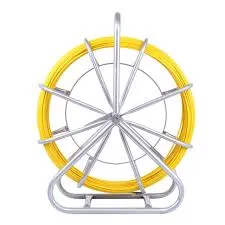
-
 Afrikaans
Afrikaans -
 Albanian
Albanian -
 Amharic
Amharic -
 Arabic
Arabic -
 Armenian
Armenian -
 Azerbaijani
Azerbaijani -
 Basque
Basque -
 Belarusian
Belarusian -
 Bengali
Bengali -
 Bosnian
Bosnian -
 Bulgarian
Bulgarian -
 Catalan
Catalan -
 Cebuano
Cebuano -
 Corsican
Corsican -
 Croatian
Croatian -
 Czech
Czech -
 Danish
Danish -
 Dutch
Dutch -
 English
English -
 Esperanto
Esperanto -
 Estonian
Estonian -
 Finnish
Finnish -
 French
French -
 Frisian
Frisian -
 Galician
Galician -
 Georgian
Georgian -
 German
German -
 Greek
Greek -
 Gujarati
Gujarati -
 Haitian Creole
Haitian Creole -
 hausa
hausa -
 hawaiian
hawaiian -
 Hebrew
Hebrew -
 Hindi
Hindi -
 Miao
Miao -
 Hungarian
Hungarian -
 Icelandic
Icelandic -
 igbo
igbo -
 Indonesian
Indonesian -
 irish
irish -
 Italian
Italian -
 Japanese
Japanese -
 Javanese
Javanese -
 Kannada
Kannada -
 kazakh
kazakh -
 Khmer
Khmer -
 Rwandese
Rwandese -
 Korean
Korean -
 Kurdish
Kurdish -
 Kyrgyz
Kyrgyz -
 Lao
Lao -
 Latin
Latin -
 Latvian
Latvian -
 Lithuanian
Lithuanian -
 Luxembourgish
Luxembourgish -
 Macedonian
Macedonian -
 Malgashi
Malgashi -
 Malay
Malay -
 Malayalam
Malayalam -
 Maltese
Maltese -
 Maori
Maori -
 Marathi
Marathi -
 Mongolian
Mongolian -
 Myanmar
Myanmar -
 Nepali
Nepali -
 Norwegian
Norwegian -
 Norwegian
Norwegian -
 Occitan
Occitan -
 Pashto
Pashto -
 Persian
Persian -
 Polish
Polish -
 Portuguese
Portuguese -
 Punjabi
Punjabi -
 Romanian
Romanian -
 Russian
Russian -
 Samoan
Samoan -
 Scottish Gaelic
Scottish Gaelic -
 Serbian
Serbian -
 Sesotho
Sesotho -
 Shona
Shona -
 Sindhi
Sindhi -
 Sinhala
Sinhala -
 Slovak
Slovak -
 Slovenian
Slovenian -
 Somali
Somali -
 Spanish
Spanish -
 Sundanese
Sundanese -
 Swahili
Swahili -
 Swedish
Swedish -
 Tagalog
Tagalog -
 Tajik
Tajik -
 Tamil
Tamil -
 Tatar
Tatar -
 Telugu
Telugu -
 Thai
Thai -
 Turkish
Turkish -
 Turkmen
Turkmen -
 Ukrainian
Ukrainian -
 Urdu
Urdu -
 Uighur
Uighur -
 Uzbek
Uzbek -
 Vietnamese
Vietnamese -
 Welsh
Welsh -
 Bantu
Bantu -
 Yiddish
Yiddish -
 Yoruba
Yoruba -
 Zulu
Zulu


Dec . 02, 2024 07:27 Back to list
traceable fish tape
The Importance of Traceable Fish Tape in Modern Electrical Work
In the world of electrical installations and repairs, precision and efficiency are paramount. One of the tools that has increasingly gained attention for its utility and effectiveness is traceable fish tape. This specialized tool, which serves as a conduit for feeding wiring through walls, ceilings, and other structural elements, can significantly enhance the process of electrical work, particularly in complex or congested spaces. In this article, we will explore the features and benefits of traceable fish tape, as well as its implications for safety and efficiency in the field.
Understanding Fish Tape
Fish tape is a long, flat, flexible tool made of steel or plastic that electricians use to route wires through walls or conduits. Traditionally, electricians would use non-traceable fish tape, which, while functional, often posed challenges in terms of tracking progress and ensuring the wire was correctly routed. This is where traceable fish tape revolutionizes the game.
What Makes Fish Tape Traceable?
Traceable fish tape incorporates a unique feature it comes equipped with a built-in tracking mechanism. This is typically achieved through an integrated wire or signal emitter that allows electricians to trace the exact location of the fish tape using a receiver. This wireless tracking technology removes the guesswork from the process, allowing electricians to easily identify where the tape is positioned, even within walls or ceilings.
Benefits of Traceable Fish Tape
1. Increased Efficiency The most notable advantage of traceable fish tape is the time it saves. Electricians can avoid the inefficiencies related to trial and error when locating the fish tape’s path. This reduction in wasted time translates into lower labor costs and faster project completion.
traceable fish tape

2. Enhanced Safety Safety is a critical consideration in electrical work. With traceable fish tape, electricians can confidently navigate complex installations without the fear of accidentally damaging hidden wiring or plumbing. By knowing the precise location of the tape, they can avoid potential hazards and work more safely.
3. Improved Accuracy Precision in installation tasks is crucial to avoid future issues. Traceable fish tape provides accurate tracking, ensuring that wires are pulled through the correct pathways. This accuracy reduces the likelihood of needing to redo work due to errors.
4. Versatility The adaptability of traceable fish tape makes it suitable for a variety of applications, from residential to commercial environments. Whether dealing with new constructions or retrofitting existing locations, this tool proves invaluable across multiple scenarios.
5. Durability and Usability Most traceable fish tapes are designed to withstand demanding conditions. They are made from high-quality materials that ensure longevity and reliability. Additionally, many models offer user-friendly features, such as ergonomic handles or lightweight designs, enhancing usability even in tight spaces.
Conclusion
As technology advances, the tools we use in trades such as electrical work must evolve to meet new demands. Traceable fish tape represents a significant innovation in this field. By offering enhanced tracking capabilities, electricians can work smarter and safer, ultimately leading to improved project outcomes.
The use of traceable fish tape exemplifies how integrating modern technology into traditional practices not only makes tasks easier but also enhances overall workmanship and safety. As such tools become more commonplace, it is essential for professionals in the electrical industry to familiarize themselves with these advancements to stay competitive and deliver quality service to clients.
In the era where efficiency and safety are crucial, adopting traceable fish tape may very well be a game-changer in the realm of electrical installations and repairs, reaffirming its place as an indispensable tool in the electrician's toolkit.
Latest news
What Are Construction Tools and How Are They Used?
NewsJul.11,2025
Professional-Grade Duct Rodding Tools for Superior Cable Installation
NewsJul.11,2025
Enhancing Safety and Efficiency with Modern Hot Stick Solutions
NewsJul.11,2025
Empowering Cable Installation with Advanced Rodder Solutions
NewsJul.11,2025
Elevate Your Cable Installation Projects with Cable Pulling Tools
NewsJul.11,2025
Efficient Cable Handling Solutions: Cable Rollers for Sale
NewsJul.11,2025











